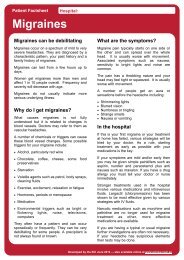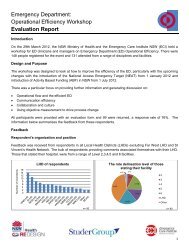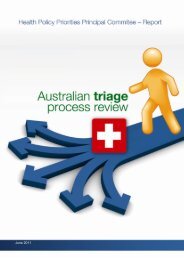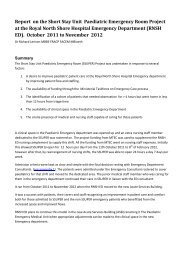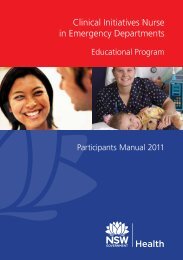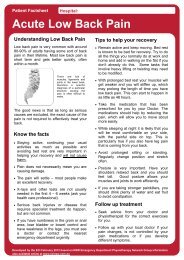Facilitators Manual - Emergency Care Institute
Facilitators Manual - Emergency Care Institute
Facilitators Manual - Emergency Care Institute
You also want an ePaper? Increase the reach of your titles
YUMPU automatically turns print PDFs into web optimized ePapers that Google loves.
4.6 PAINAimThe participant will by module completion gain a greater understanding of pain assessment &management principles.Learning OutcomesParticipant will on program completion be able to• List the physiological symptons of pain.• Competently assess pain using the numerical pain and visual analogue scale.• Describe different types of analgesia, indications/contraindications.• Discuss analgesia treatment regimes.Content• Physiological symptons of pain.• How to assess pain – using the VAS & Numerical pain scale, patient history, clinical signs and symptons.• Types of analgesia, indications & contraindications.• Analgesia treatment regimes – contributing factors, providing too much/not enough analgesia.Suggested Modalities• Self Directed Learning.• Modified lecture.39Expected Timeframe: 60 minutesReferences/Resources• Duignan, m. & Dunn, V., Congruence of pain assessment between nurses and the emergencydepartment patients: A replication. Internation <strong>Emergency</strong> Nursing (2008) 16, 23-28 (online).• http://emergencycare.nhmrc.gov.au/blog/files/Congruence%20of%20pain%20assessment%20nurses%20and%20emergency%20department%patients.pdf.pdf• Newton, A. 2007. Pain (assessment and management of), NHS Evidence (online)• http://www.library.nhs.uk/<strong>Emergency</strong>/ViewResources.aspx?resID=266669• http://painsourcebook.ca/pdfs/fps-r-multilingual-instrucyions-mar09.pdf




